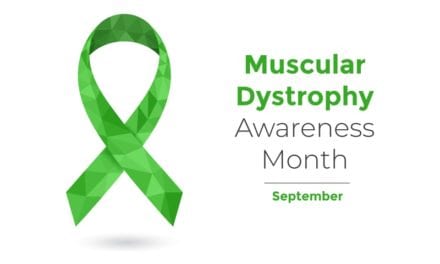In what is reportedly the first study of independent in-home use of a brain-computer interface (BCI) by patients with amyotrophic lateral sclerosis (ALS), users of the device have found it reliable, according to a study in Neurology.
In addition, among the eight individuals who completed the study, seven chose to keep the device for future use.
“BCI use by individuals with ALS has been tested in research laboratories for many years. Those studies featured one patient at a time surrounded by numerous experts and support staff involved with training the individual to use the system, setting things up, and troubleshooting. This is the first study that tested the real practicality of an individual with ALS using such a system independently at home,” says Michael Wolfson, PhD, director of the Program in Rehabilitation Engineering and Implantable Medical Devices at the National Institute of Biomedical Imaging and Bioengineering, in a media release.
A BCI offers individuals with ALS, and other neurological disorders, which can severely impair speech and other movement, a way to communicate using only brain signals translated into words through a computer interface. The user wears a cap with electrodes that record brain-based EEG signals as the user faces a computer screen, the release explains.
Jonathan R. Wolpaw and colleagues from multiple VA centers across the country led the research, which included all male participants with advanced ALS but without complete locked-in syndrome (CLIS).
Among the participants, 12 of the 27 individuals who had the BCI placed in their homes left the study within a few months due to factors that included death or rapid disease progression. Additional reasons included loss of interest in participating and loss of the caregiver who had been trained to assist with use of the system.
The individuals who mastered BCI use were followed for up to 18 months. During about 40% of total days in the study period, participants were unable to use the BCI because they were hospitalized or too sick at home. Nevertheless, participants used the system on average 2 days a week and those sessions lasted about one and a half hours each, with users averaging three selections per minute. A selection could include a letter, a word, or an icon or command like “send email.”
Wolpaw and the research group concluded that, “the BCI system could function reliably and usefully when operated by patients in their homes.” In addition, “patient and caregiver ratings indicated that BCI benefit exceeded burden.” And finally, “BCIs that support communication are at present most suitable for people who are severely disabled but are otherwise in stable health,” the release continues.
The researchers are all working to improve BCI systems to increase efficiency of communication and to help even the most debilitated individuals with ALS continue to communicate.
In addition, they all agree that it is essential to combine the rapidly evolving technologies with practical assessments of in-home efficacy of the devices in order to give clinicians the best information available to help guide their patients when making decisions about assistive options, the release concludes.
[Source(s): National Institute of Biomedical Imaging and Bioengineering, Newswise]





